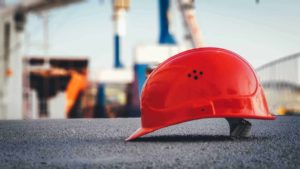When you start a new construction project, you make agreements with the seller about materials, payments, and other factors. This contract serves as a starting point, but new circumstances can lead to significant changes. For example, a customer may lose money during the contract and request cheaper materials. Some clients will want you to speed up production and provide extra compensation if you hit closer deadlines. You may also receive a request for an additional feature. A client’s needs can change during the construction, and charge orders address this scenario. We’ll discuss how change orders work, so you know what to expect if your client has new requests.
What Is a Change Order in Construction?
A change order, also known as a variation order, lets clients address new requests and add them to a new contract. Some change orders have minor changes, while other change orders represent major changes from the original document. After reaching an agreement, the change order contract replaces the preexisting agreement and dictates the new direction for the project. Change orders can modify deadlines, add new milestones, and make additional changes. You will have to create a change order draft that reflects the client’s new requests and the contractor’s price change. A change order only takes effect once both parties sign the agreement.
When Do You Need a Change Order?
Contractors need a change order when clients make requests outside of the original contract. A change order helps both parties reach a new agreement concerning additional features, cost-cutting measures, and other initiatives. Change orders reduce stress from both sides. This process helps contractors and project owners settle disagreements and move forward with the construction process. It’s important to reach new contract terms through paper instead of a verbal agreement. Verbal agreements do not carry as much weight as change orders.
The Change Order Process
The change order process consists of several steps. Completing each step when crafting your first draft will minimize issues and help you get back to work sooner. We have outlined how these orders got initiated and resolved.
Signing Of Contract
Clients receive several bids from project managers and construction companies. After reviewing these offers, the client must choose an entity to handle the project’s workload. Finally, the customer and contractor must reach an agreement before construction starts. The initial contract is legally binding. This document jumpstarts the relationship and sets objectives for the contractor to achieve.
An Issue Arises
Construction projects have objectives, requirements, and deadlines, but circumstances can change. For example, weather conditions, errors or omissions can impact the total costs and schedule. It’s also possible that a client makes a request during the project that requires a change in the construction contract. Requests can range from new features to using more affordable materials. As a result, clients may not provide additional funds until the issue gets resolved.
Any delay in funds can stall deadlines since you need that capital to buy materials. If you have a short-term issue and want to move along with obtaining materials, you can get funding from material financing companies. This funding lets you buy materials and continue construction projects during these circumstances. This approach works best if the problem can get resolved quickly.
A Change Order Is Initiated
The client wants changes, and the contractor must create a first draft of the change order. This draft contains additional details and may set a new price point for the construction. It’s an amended contract that reflects new milestones, deadlines, and costs. The first change order you receive may not necessarily be the last. Some construction projects go through several change orders before contractors complete the work.
Evaluation of Change Order
The client will review the contract and address any concerns. This part can take a while and result in significant delays depending on the project owner and general contractor negotiating the effective change order. You may have to revise the change order several times to meet the client’s requests. Reliable communication during this process is vital and can help you get back to work sooner. Both parties typically hire construction lawyers to create and review documents that outline the construction contract.
Change Order Agreement
After going back and forth, both parties reach a new agreement. The contractor and customer sign the change order contract and make it official. It’s good to get the change order in writing because it can create legal issues if you don’t. Any disputes will turn into a “he said” battle between the project owner, general contractor, and their construction lawyers.
Amendment of Contract
The effective change order modifies the existing contract and acts as the new guiding compass. The original agreement has been altered to address the client’s changing needs and objectives, along with new costs for the construction services. Parties can no longer go back to the old agreement to describe objectives and deadlines. The approved change order is the new path forward.
Common Reasons for Change Orders
Construction is filled with uncontrollable factors that can prompt changes in expectations and budgets. A party may request changes to the established contract throughout the project’s construction. These are some of the most common reasons change orders occur.
Inaccurate Contract/Design Specifications
Contract inaccuracies can overestimate or underestimate costs. Contractors can make their best estimates, but many forces can influence materials and labor costs. A client may also simply want a more expensive material. Contractors frequently use cost-effective materials that balance affordability with effectiveness and keep profit margins at favorable levels. Using affordable materials that still get the job done also allows contractors to enter construction projects with reduced bids, a decision that can make them more attractive than higher-priced options. On the other hand, a contractor may need a bigger budget to buy the necessary materials or additional hours to complete the project.
Ambiguous or Imprecise Drawing
The construction blueprint helps clients see what their finished property will look like before work begins. Employees look at the drawing when working at the site to make sure they perform effectively. Contractors will check the drawing before signing the contract, but some drawings have flaws.
The drawing significantly impacts the direction of a construction project, and misinterpretations can create frustration with both parties and increase costs. A project owner may be shocked at the placement of one of the walls and prefer if it were a few feet back to create more space. Tearing down the wall and building a new wall that fulfills their requirements will cost time and money, two key areas an effective change order can address. Issues like these don’t only happen with walls. When the drawing is open to interpretation, many parts of the construction project are at risk of experiencing this problem. A project owner or contractor who suspects an ambiguous or imprecise drawing may ask for a change order.
Late Arrival of Workers/Items On-Site
Contractors and clients establish project milestones and deadlines. When agreeing to deadlines, contractors assume workers and materials will arrive on time. Any delays can stall production and push back deadlines. Contractors can attempt to rush work to fulfill a deadline, but this last-second effort can hurt the project’s quality and present a danger to people who use the completed structure. Instead, both parties may agree to a change order with new deadlines to reflect the slow start and avoid rushing at the cost of missing small but important details at the site.
High Worker Turnover Delays the Project
The construction industry is notorious for high turnover rates, especially for younger workers. A contractor can find the right workers for the job, but lengthy projects can frustrate workers seeking new opportunities. As a result, some workers may walk away from the project in favor of a better opportunity, and workers can also go on strikes to bring more attention to low pay, unsafe conditions, or another detriment. Contractors can mitigate this risk by having large networks of workers and bringing many employees to the construction site. However, too many workers on-site will increase construction costs. In addition, contractors can’t anticipate the turnover and will have to reach a new agreement with the project owner if there’s enough turnover to impact productivity.
Due to the demand for labor in the construction industry, it may take a while to replace workers who leave. The contractor will also have to decide between paying more money for someone with similar experience or paying less money for an inexperienced worker. The former option increases your costs, while the latter choice can create issues with the project if the new hires are too inexperienced. However, these may be the only available workers in a tight labor market.
Improper Budgeting and Scheduling
A client may question a contractor’s use of funds, especially if the contractor’s front-loads payments and the site conditions don’t look much different from a few months ago. Poor budgeting can result in inefficiencies that prompt a project owner to have a long conversation with the general contractor.
A subcontractor can also cause the problem. Most contractors and subcontractors take on multiple construction projects, so they have multiple income streams. The more projects a contractor can take on, the more money they make. However, when multiple projects spread a contractor’s time too thin, that person can get distracted and forget about upcoming deadlines for one of those projects. If a subcontractor falls behind, it can impact the contractor’s ability to hit deadlines and project milestones.
Improper budgeting and scheduling practices can result in a change order and a disgruntled customer, but it can also work in reverse. Sometimes, a client does not provide enough funds to cover updates from a previous change order. The clients may have made a new request, and both parties may have underestimated its total cost.
Weather
Weather plays a role in construction times, impacting workplace safety and materials. A rainy day can delay some parts of construction, and if it pours, workers will need waterproof gear. If a foot of snow accumulates on the ground, the entire construction team may have to take a few days off to wait for the snow to clear. Extreme heat, humidity, and dryness can also impact a project’s completion date and how quickly a construction team moves to the next milestone.
Other Unforeseen Conditions
It’s difficult to anticipate everything that can go wrong with a construction project, but sometimes an issue is neither party’s fault. Rather than one party being at fault, both parties decide to come together to address an unpredictable event or outcome. The construction site may have a hidden problem, and an inspector can reveal significant issues that make both parties have second thoughts, or material costs can substantially rise.
When the United States experienced its highest inflation in over 40 years, the cost of construction materials soared by 20% between January 2021 and January 2022. This statistic, pulled from an analysis of government data done by the Associated General Contractors of America (AGC), highlights how unexpected changes in the economy and other factors can surprise contractors who bid for projects that can take more than a decade. Either party can request a change order due to any unforeseen conditions that impact either party’s ability to fulfill their end of the original contract.
What Is Included in a Change Order?
A change order has several components. Including all of them in your first draft will accelerate the process and help you get back to the project sooner, a common goal shared by all parties.
Project and Contact Information
Every charge order should include the project’s name and address and the change order number. Some contractors and clients agree to several change orders or go through multiple drafts before reaching a conclusion. Numbering your change orders helps both parties keep track of updates. You should also include the names and contact information of the owners and contractors involved in the project.
Description of the Requested Change
Prepare a description that explains the added or eliminated work from the project. The contractor should write a detailed description that explains why the change order was necessary and the modifications it entails. The customer may not be as familiar with the scope of work. Don’t assume your customer knows every small detail about the extra work involved. A detailed description can strengthen your legal case if you end up in court. Contractors should hope for the best but prepare for the worst.
Update Schedule
The change order process puts a halt on construction, making previous deadlines unrealistic. As a result, the contractor and client have to agree on an updated schedule with new deadlines for each milestone. An updated schedule can also become necessary if materials and workers arrive later than expected or another unforeseen circumstance takes place.
Cost of the Change
Adding and removing materials and services will impact the contract’s cost. You will have to pay more for workers and supplies if the client presents more ambitious plans. Project owners and contractors have to discuss those additional costs and create a new budget that reflects those expenses. Detail the cost of the change in your change order for each expense to avoid ambiguity.
Updated Contract Value
You can add or subtract the cost of the change from the original contract value. This updated contract value puts both parties back on the same page. With the details sorted out, contractors and workers can go back to the site and complete the project.
How to Improve Your Cash Flow in Case of Change Orders
The construction industry is a low-margin business. Change orders stall projects but can also deplete your cash reserves. You may breeze through a construction project without a single change order, but some clients may make several requests. Change orders can lead to significant stress and project delays if you don’t have a plan. Getting short-term capital can help you navigate project delays and other obstacles.







